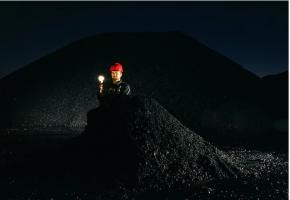Report Reveals World's Fourth Largest Lake Now a Deadly Desert

Before the 1960s, the fourth largest lake on Earth glistened for miles across the borders of Uzbekistan and Kazakhstan. By 2015 most of that shiny surface was reduced to a hauntingly barren expanse, birthing the world's newest desert and impacting 3 million people that live in the surrounding region.
The Aral Sea once spanned 68,000 sq km, but reports now suggest all that currently remains is a few slithers amounting to about 8,000 sq km of water. The rest of its bone-white seabed now forms the Aralkum desert.
Studies have found the loss of this inland sea nearly doubled the region's atmospheric dust between 1984 and 2015, from 14 to 27 million metric tons.
The airborne former lakebed has reduced air quality in neighboring cities, even as far as 800 kilometers away, and is contributing to the acceleration of glacial melt. This is then further exacerbating the region's water crisis. Storms spread these damaging salts, destroying crops hundreds of kilometers, and contaminating drinking water.
Aralkum's dust is particularly toxic compared to the rest of the region's desert dust because it contains runoff from nearby USSR chemical weapons testing and is full of fertilizers and pesticides from the same mass agricultural practices responsible for draining the Aral Sea.
Between the 1960s and 1990s, the Amu Darya and Syr Darya rivers that flowed from the mountains to supply the lake were redirected to irrigate 7 mln. hectares of cotton fields for the Soviet Union.
The massive-scale irrigation that's continued since in various forms rapidly reduced the lake, eventually splitting it into two slithers, and connecting its hundreds of islands to their surrounding banks.
Salinity concentrations in the remaining water increased to levels higher than the ocean, destroying most of the native life within and collapsing the local ecosystem. This destroyed the livelihoods of many people.
The Aral Sea is a stark warning of the deadly and complex consequences of failing to prioritize enough water for the local environment.
Source: Science Alert
Image: NASA







